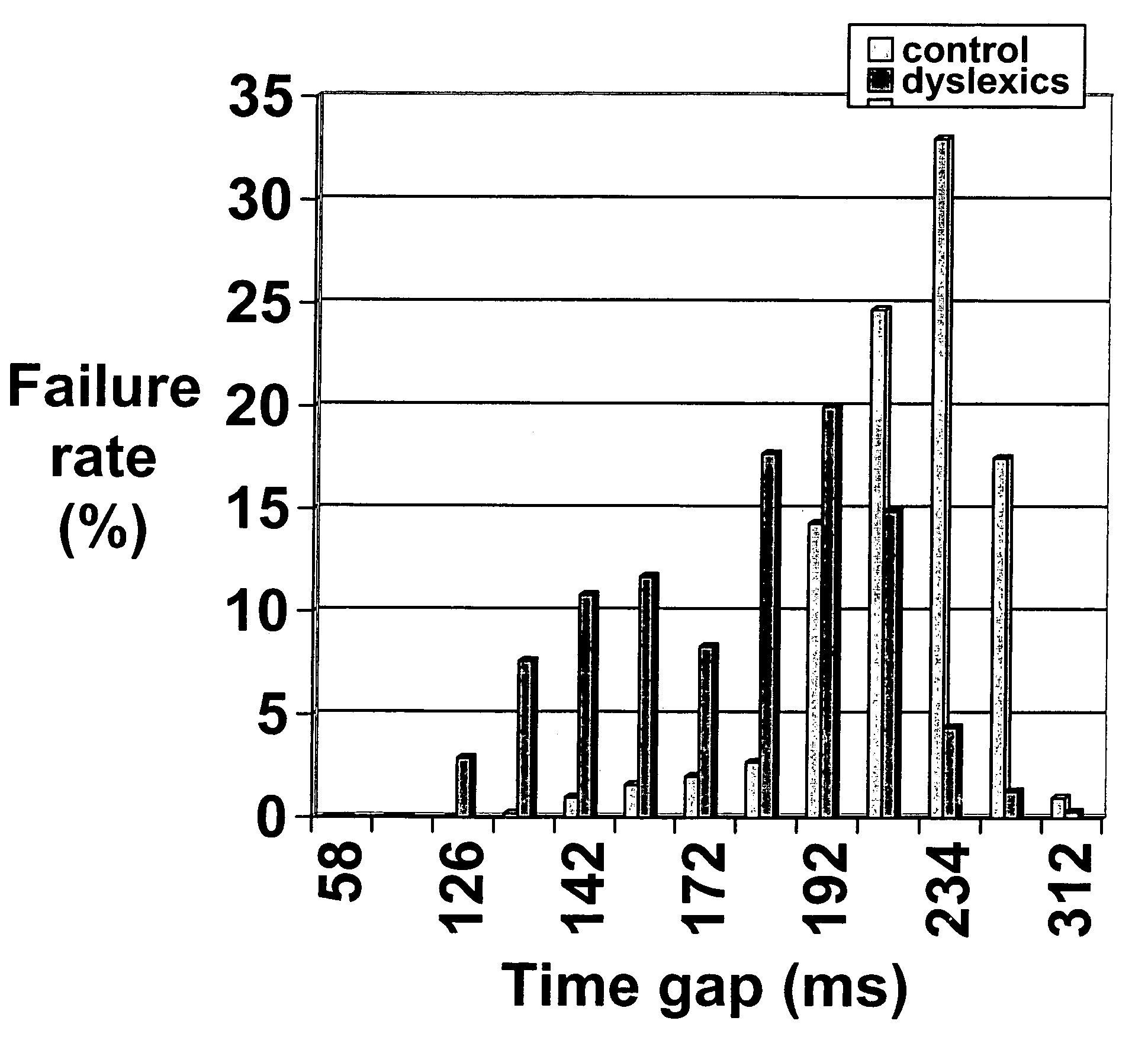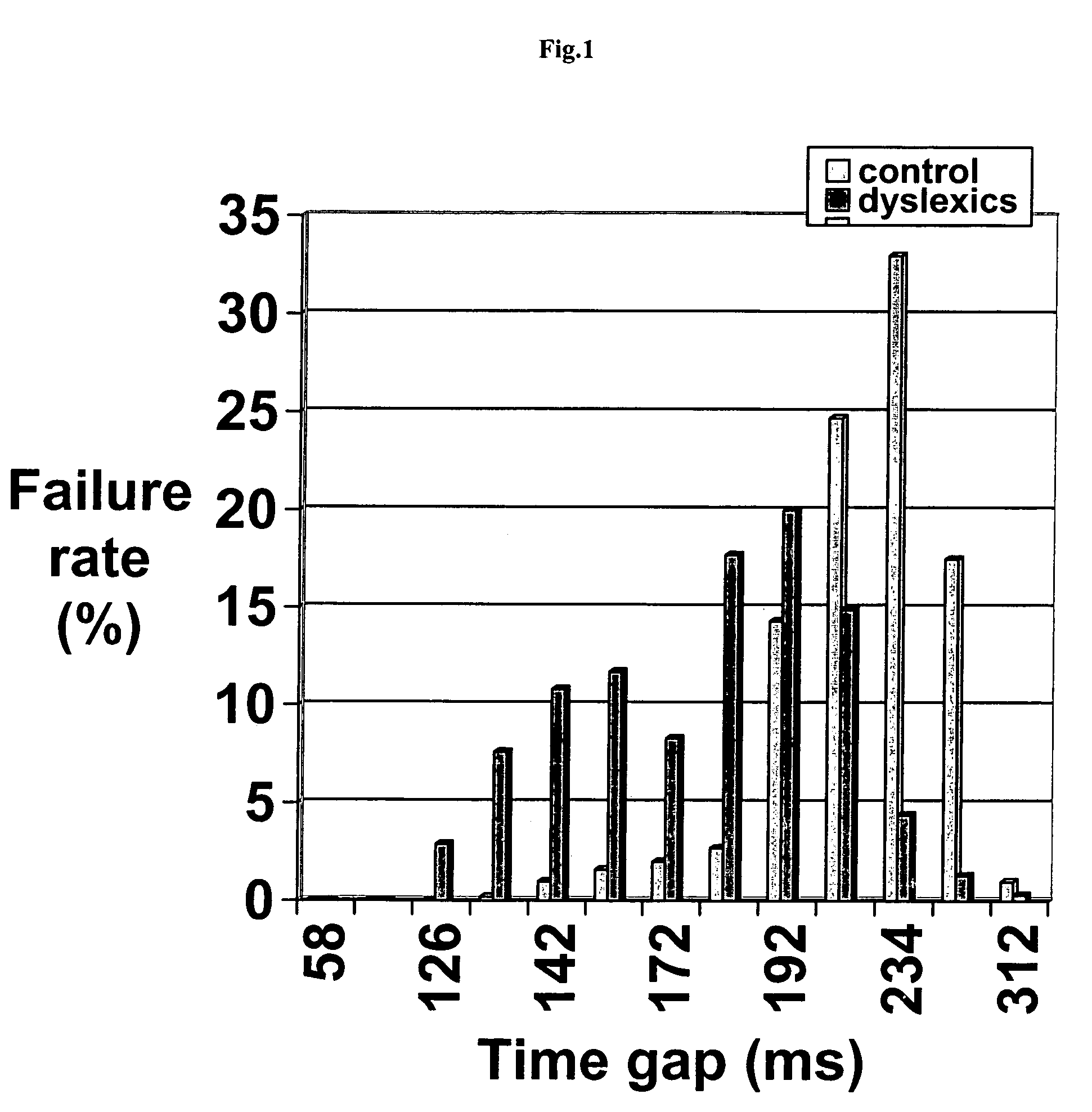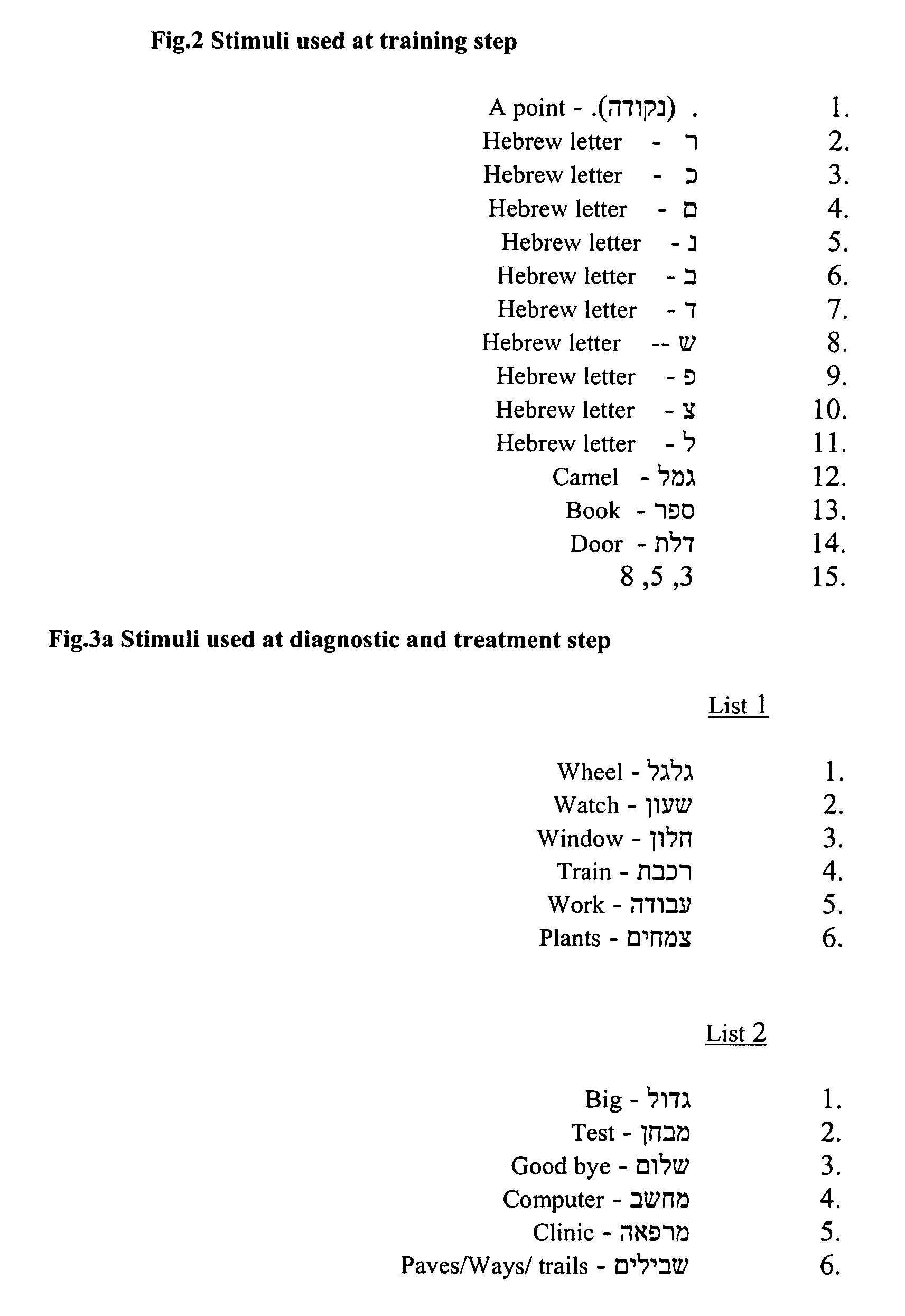Method for detection and improving visual attention deficit in humans and system for implementation of this method
a visual attention and human technology, applied in the field of visual attention improvement, can solve the problems of impede the temporal integration of visual partial signals, dyslexics displaying inferior rather than superior reading of display texts compared to normal readers, etc., to achieve the effect of improving visual attention
- Summary
- Abstract
- Description
- Claims
- Application Information
AI Technical Summary
Benefits of technology
Problems solved by technology
Method used
Image
Examples
experiment 1
[0033]This experiment was intended to examine the distribution of poor readers, age matched controls and reading age controls according to their performance depending on different presentation velocities.
[0034]Method:
[0035]Subjects: 551 good readers and 315 poor readers (age range 8 to 55) took part in this experiment. All subjects were native Hebrew speakers that were educated in Israel with normal or corrected visual acuity.
[0036]The vocal reading fluency (reading speed and error rate) of all subjects was estimated by normative to age / education level texts. The poor readers sample included only subjects that were 1.5 SD or below normal level on one measure and 1.0 SD or below that on the other. The control sample included only subjects that were at least 0.5 SD above the level on both measures.
[0037]Table 1 presents the distribution of subjects in both samples according to their age and gender.
[0038]
TABLE 1Subjects' distribution according to age and genderSumsFemalesMalesAge Group...
experiment 2
[0052]This experiment was intended to examine the effect of the present treatment method for improvement of attentive scanning upon reading performance of dyslexics.
[0053]Method:
[0054]Sixty male dyslexics of the former experiment that failed in time gaps of 126 to 184 milliseconds were the subjects of this experiment. This time gap range was chosen since within it as much as 38% of dyslexics failed while only 5% of controls. The 60 subjects were sampled in triplets according to age and time gap failure. This enabled the division of the sample to three groups.
[0055]One group used as the experimentally treated group (treatment group). The second was given an alternative reading training and the third group did not get any treatment (no-treatment group).
The Treatment Group
[0056]Each of the 20 subjects of this group was engaged with eight one-hour treatment sessions. In the first session the subjects were exposed to words and texts presented at time gaps of their last success in experim...
PUM
 Login to View More
Login to View More Abstract
Description
Claims
Application Information
 Login to View More
Login to View More - R&D
- Intellectual Property
- Life Sciences
- Materials
- Tech Scout
- Unparalleled Data Quality
- Higher Quality Content
- 60% Fewer Hallucinations
Browse by: Latest US Patents, China's latest patents, Technical Efficacy Thesaurus, Application Domain, Technology Topic, Popular Technical Reports.
© 2025 PatSnap. All rights reserved.Legal|Privacy policy|Modern Slavery Act Transparency Statement|Sitemap|About US| Contact US: help@patsnap.com



